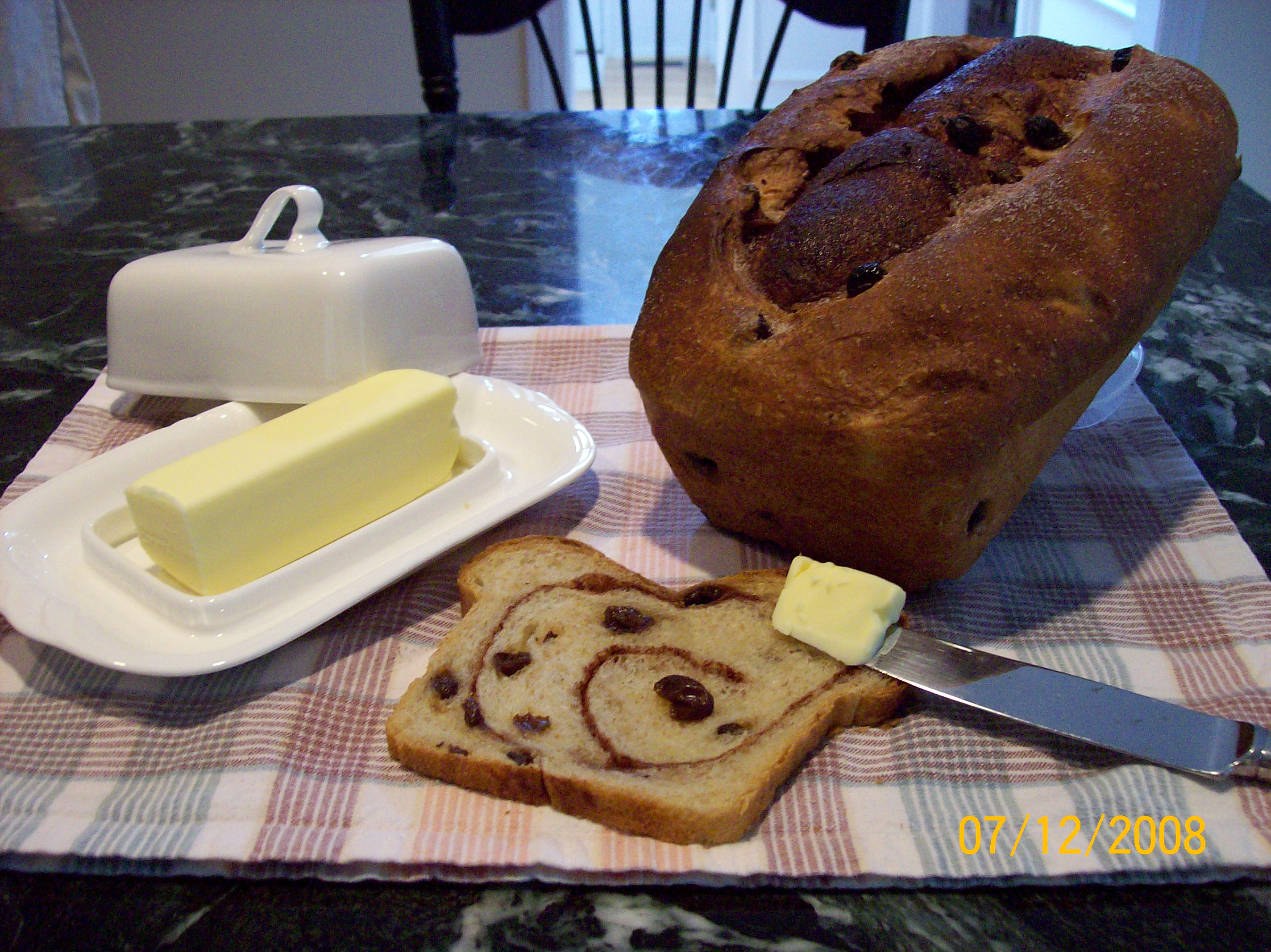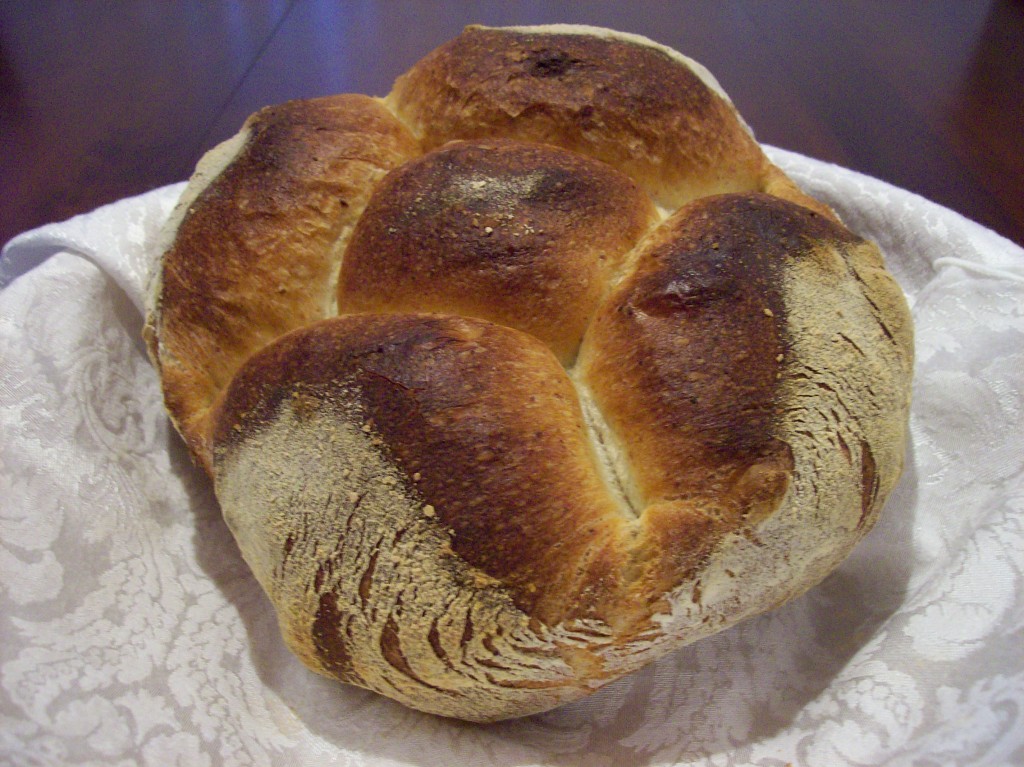If I had to choose one bread whose aroma while baking consistently makes my mouth water, it would have to be cinnamon raisin bread. Unlike baguettes or pan de campagne, which are made from lean doughs (i.e., doughs with little or no fat), cinnamon raisin bread is made from a rich dough. The fat used here is butter (in this case, about 20% in baker’s percentage) and it gives the cinnamon raisin bread its distinctive soft crumb and luxurious texture.
Continue Reading »
Tags: bread, cinnamon, folding, raisin, shaping
Posted in Rich Doughs, Techniques | 44 Comments »
Pain de campagne, or “country bread”, is bread�baked in the style of the rustic loaves found throughout the French countryside.� There really is no one correct way to bake a pain de campagne loaf; the formulae are as varied as the traditional ways of shaping the loaves.��Pain de campagne can be made with�a natural leaven or with baker’s yeast.� Some prefer to add a small percentage of rye flour to their dough while others�prefer whole wheat.��Traditional loaf shapes include fendu (split), couronne (crown), tabati��re (snuffbox), and bouton d’or (buttercup), to name a few.
Continue Reading »
Tags: bouton d'or, bread, p��te ferment��e, shaping
Posted in Lean Doughs, Techniques | 18 Comments »
I’m a firm believer that >95% of the problems encountered�by bread bakers originate at the mixing stage.� The main objective of proper mixing is to�develop the�gluten sufficiently�so that it can effectively�trap the�CO2�produced during fermentation.� Overmixing should�be avoided since it can lead to�an overly strong dough�which can�result in a�loaf with poor volume and a tough crumb.���
It has also been emphasized by many professional bakers�that�overmixing can also cause the oxidation of compounds present within the dough which�contribute to the flavor and color of the bread.��While I don’t doubt that this can be a real concern at the commercial scale, where�highly efficient dough mixers can�quickly incorporate too much air into the dough if left unchecked, at the scale of the home baker�I found�that I had to look for ways to actually�increase air incorporation.� At appropriate levels, the air�is beneficial in that it contributes oxygen which is�used, albeit rather quickly,�by�the yeast�during its aerobic reproduction phase.� Small air bubbles in the dough�also acts�as�nuclei�for alveoli�production during fermentation.
Continue Reading »
Tags: air incorporation, hand mixing
Posted in Techniques | 42 Comments »
It’s been said that the baguette, although�one of the simplest breads (being comprised of only�flour, water, yeast and salt), is perhaps the most difficult bread to make well. A good baguette has a thin, crisp crust, a light and airy crumb having a distribution of both large and small air pockets (alveoli), and a slightly sweet, almost nutty flavor. Being the perfectionist that I am, I would also add that a good baguette has to look enticing, being a feast for the eyes as well as the stomach.

The baguette formula used here is a modification of the Baguettes with Poolish formula described by Hamelman on page 101 of�Bread: A Baker�s Book of Techniques and Recipes (see book for baker’s percentages).� The main changes were in the method of mixing (see�Musings on Mixing�), the amount of yeast used in the final dough and the elimination of the folding step.
Continue Reading »
Tags: baguette, bread, poolish, shaping
Posted in Lean Doughs, Techniques | 114 Comments »
Shopping can be a real bore.� Except, in my case, for food shopping.� Homemade pickles and relishes, arcane Asian ingredients and other imported specialty food products have always�piqued my interest.� It was with no surprise, then, that a few years back�I found myself in the specialty food section of the�Old Country Store�in Mansfield, MA.� In addition to all the homemade food items�offered for sale there, a wide variety�of bread mixes was also on display.�
Having never baked a loaf of bread before, I thought it might be fun to see if I could�bake�anything approaching�edibility.� The answer, it turned out, was ‘just barely’.� The result of my efforts�wasn’t much different from the�pasty�white bread found in a typical supermarket.� The bread was nothing like the�deeply flavored�crusty loaves I remembered savoring�during previous trips to Europe.��I’m not sure why I expected that it would be.
Being the obsessive person that I am, I became�determined to learn how to bake European hearth-style breads�in my home kitchen.��������
And so it�begins…
Posted in Introduction | 3 Comments »


